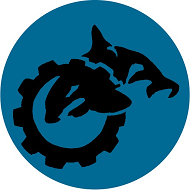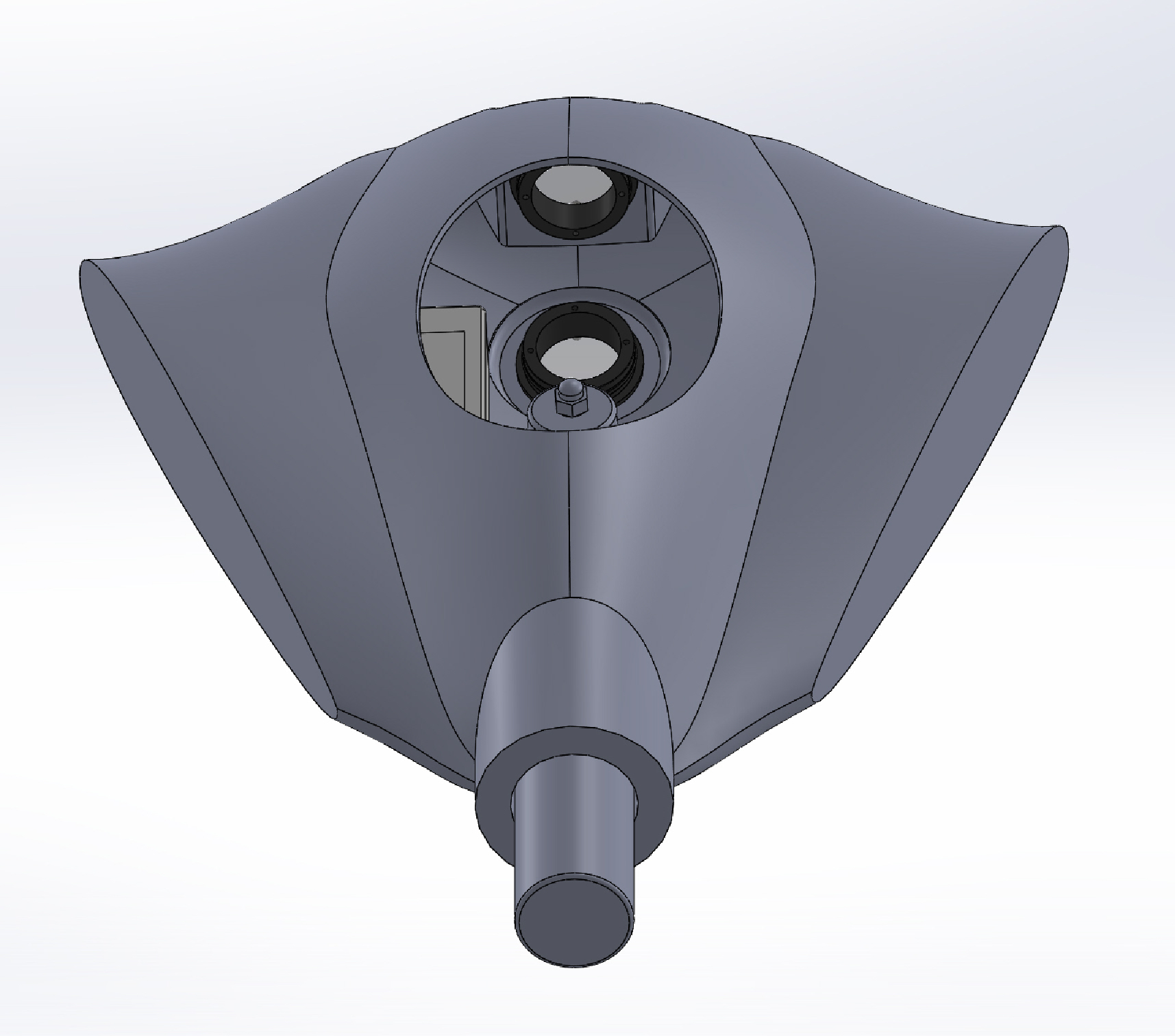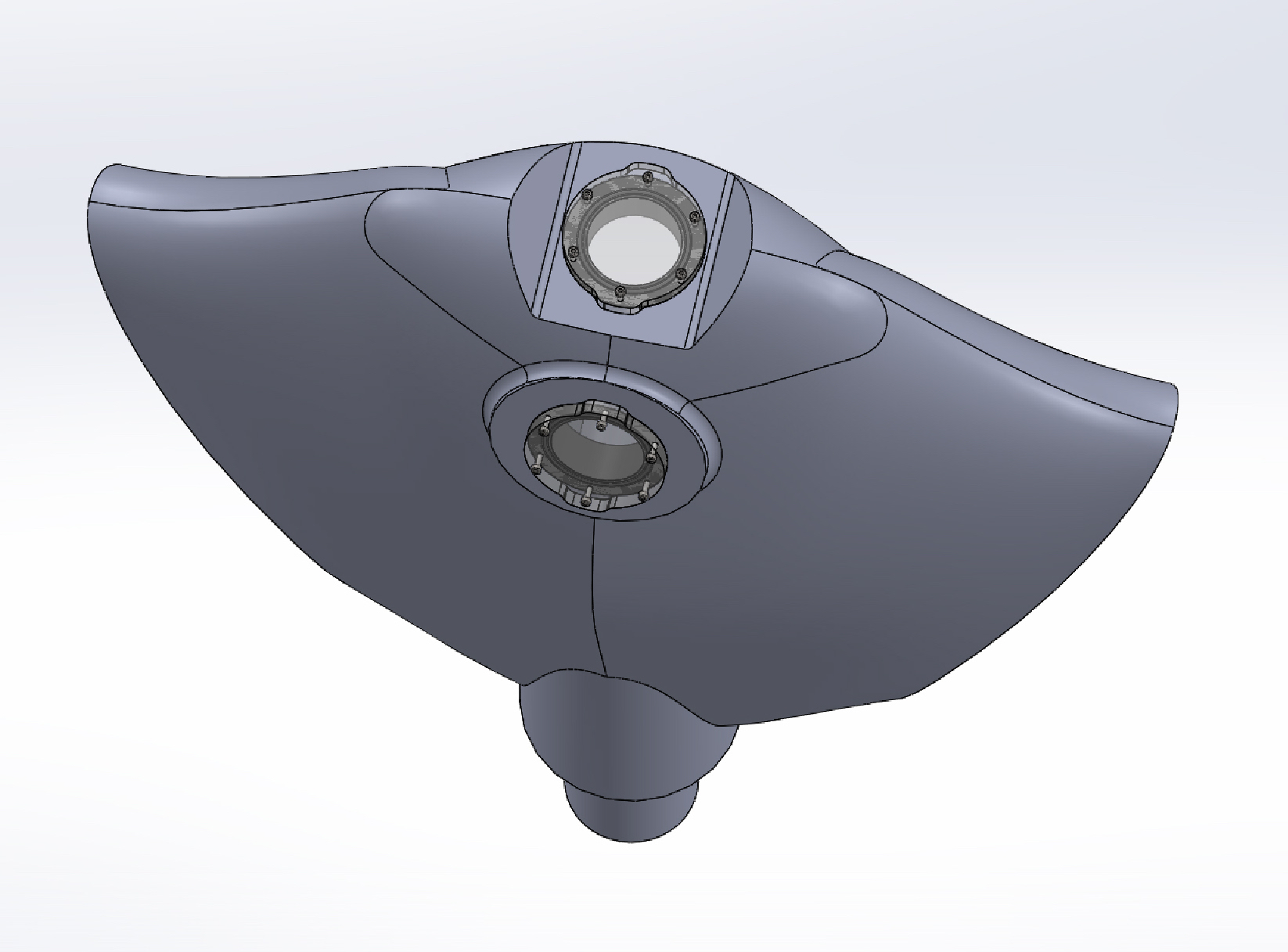Hulls cast from epoxy are ideal for bio-inspired robotics. Casting an epoxy hull into 3D printed disolvable molds enables fast creation and iteration on incredibly comlex hull designs, even those containing the complex organic found in bio-inspired designs. Casting also enables simple embedded inclusions enable features such as threaded bolts extruding from the cast hull, or threaded meatal inserts, to be use for mount points. More complex inclusions enable components such as pressure rated hatches and portholes to be added directly to the cast hull.
While the shark inspired design is looking like it will be the form factor for our main research platform, another hull design – one based around a manta ray – was created to experiment with embedding components into cast hulls. Here you can see the initial design. The wings of the ray will bolt onto the frame, and they are missing in these renderings.
The depicted design is for hull with a dry interior. So it will be testing the use of embedded pressure rated portholes, and using 3D printing to create pressure rated seating faces for hatches. The design will use a combination of pneumatic and hydraulic actuators, and the tube seen out the back of the drone is a CO2 tank, which will run the actuated surfaces.


